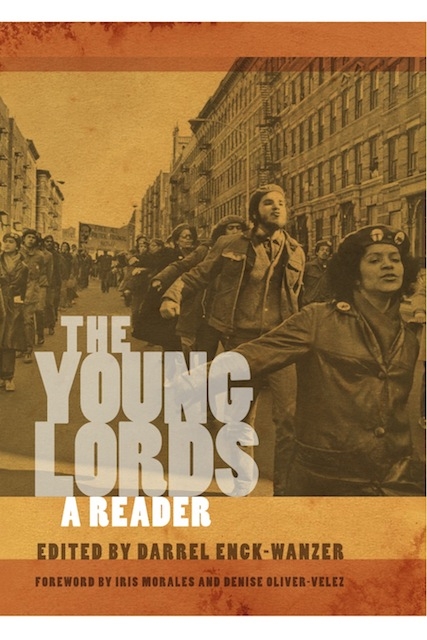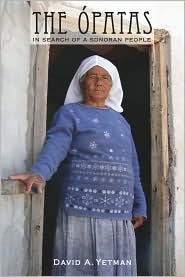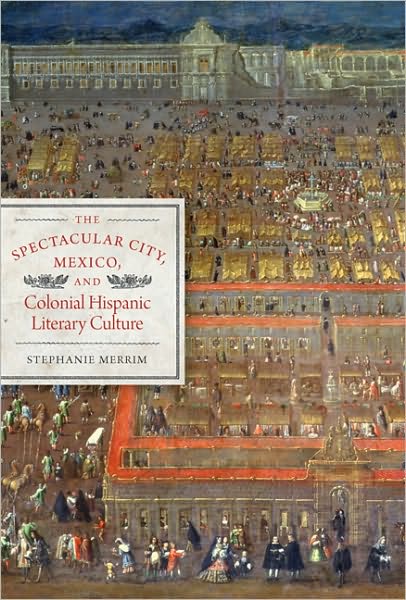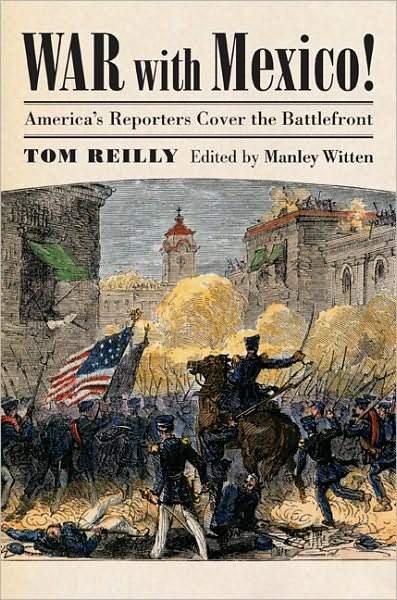Martes con Lalo Delgado
The Chicano Movement: Some Not Too Objective Observations
by Abelardo B. Delgado
Nationalism
Share
The Chicano Movement is, in fact, an effort to nationalize the second largest minority in the United States. Manifestation of this nationalization processes are now evident. This grouping of Chicanos doesn't necessarily mean we are the only ones pushing for it, or that we are the initiators. Examine, if you will any city in which Chicanos live.
The barrio is a very marked isolated, geographic means of economically corralling Chicanos and therefore, nationalizing the city. If it is the school, the peers of Chicano children will band to survive the stifling experience. If it is job-wise, we will see the Chicano truckers, sanitation men, mail clerks continuing the process.
On the social level, we see the circle of “compadres y comadres” attending a series of shower, weddings, baptisms, quinceaneras, birthdays and sharing a “parranda,” our equivalent of the cocktail hour. Naturally, the isolation imposed on us for years by our lighter, blond brothers, has made the nationalization process only a mere awareness of what we have had all along.
Nationalism, in our case, is a matter of culture, values, and language, plus, in most cases, a common denominator of economic deprivations. We have come, then, through the movement not only to recognize and acknowledge this separatism and call it by its proper name, but rather accept the sociological garble that has labeled us unique and slow in assimilation. We now take full pride in our isolation which is responsible for our very survival.
It is not a mere case of being different and wishing to remain different, for now we have also realized that nationalism is the very force we must use to regain control of our communities, of our lives, of our destinies.
The raza Chicana has today the following manifestation to indicate that not only is nationalism essential to the movement, but the very vehicle for positive lawful action:
Colegio Jacinto Trevino, Centro Educativo Chicano in Mercedes, Texas – a college by Chicanos, for Chicanos, staffed by Chicanos. The same educational efforts were launched by the Crusade for Justice, Denver, Colorado, in their Plaza de las Tres Culturas, Tatelolco, which includes all levels.
Where it is not possible to have our own educational system geared to our values, we have such school organizations, such as UMAS, MAP, MECHA, MAYOS, MAYAS, as well as Brown and Black Berets. Most colleges have made big strides in correcting their deficiencies by devising Chicano cultural and curricular improvements while enriching their faculties with knowledgeable and committed movement teachers.
La Raza Unida, our political party, has made a bid for existence that has already shaken our two twin parties. The bid is serious as now for the first time, Chicano candidates and Chicano issues relate directly to our situation. This, plus the evident neglect, or republicans and democrats have assisted in making La Raza Unida one of the significant and attractive pieces of nationalization.
What about economic nationalization? Our efforts in that direction though less impressive, continue to amaze some of us who were pessimistic that we might succeed in this area given that scant exposure we have suffered historically. CEDA and ULABA, again of Denver, stand out as a very sturdy pioneers in settling the Chicano up to run his own businesses. From construction companies to a bank of our own, our own radio stations, our own newspapers, our own restaurants and stories, barbershops and cleaners, and why not?
I had hoped to spend some words defending, or counter attacking, the criticisms expressed against our nationalistic efforts, but I will not do so. Instead, may I re-direct those criticism to the most successful nationalist within our commumnty -- the Jews, the Italians, the Asians -- for I am very sure that whatever motives they have had all along to remain very much unique groups, are the same motives that we could express. Anyway, let me just quote my Joseph W. Barr dollar bill – E Pluribus Unum.
FIN
Other parts of this series:
Part IV Goals
from The Chicano Movement: Some Not Too Objective Observations by Abelardo B. Delgado, (Denver: Colorado Migrant Council, 1971), prepared by the Colorado Migrant Council. Published with permission from the Delgado Estate. (c) Abelardo Delgado 1971.
New Books in November 2010
Share
Paperback NYU Press November 3, 2010
ISBN-10: 0814722423
Iris Morales (Author), Denise Oliver-Velez (Author), Darrel Enck-Wanzer (Editor)
The Young Lords, who originated as a Chicago street gang fighting gentrification and unfair evictions in Puerto Rican neighborhoods, burgeoned into a national political movement in the late 1960s and early 1970s, with headquarters in New York City and other centers in Philadelphia, Boston, Los Angeles, and elsewhere in the northeast and southern California.
Part of the original Rainbow Coalition with the Black Panthers and Young Patriots, the politically radical Puerto Ricans who constituted the Young Lords instituted programs for political, social, and cultural change within the communities in which they operated.
The Young Lords offers readers the opportunity to learn about this vibrant organization through their own words and images, collecting an array of their essays, journalism, photographs, speeches, and pamphlets.
Organized topically and thematically, this volume highlights the Young Lords' diverse and inventive activism around issues such as education, health care, gentrification, police injustice and gender equality, as well as self-determination for Puerto Rico.
In recovering these rare written and visual materials, Darrel Enck-Wanzer has given voice to the lost chorus of the Young Lords, while providing an indispensable resource for students, scholars, activists, and others interested in learning about this influential grassroots “street political” organization.
Forthcoming in 2010
Paperback Haymarket Books June 1, 2011
ISBN-10: 1608461297
Young Lords Party (Author), Michael Abramson (Photographer), Iris Morales (Introduction)
In 1969, a group of young Puerto Rican activists founded the Young Lords Party in New York City, taking inspiration from the Black Panthers. Palante, the first book by and about the radical organization, is brought back into print here with new introductory material. Capturing the spirit and actions of the sixties movements, Palante features political essays by members, oral histories of their lives leading into the party, and more than seventy-five photos of their vibrant membership and actions.
Michael Abramson is a photographer and publisher who lives in Brooklyn, New York.
Iris Morales is the producer of the documentary ¡Palente, Siempre Palente! The Young Lords, which aired on PBS, and is the executive director of the Union Square Awards.
In 1969, a group of young, primarily Puerto Rican activists founded the Young Lords Party in New York City, taking inspiration from the Black Panther Party. Organizing directly in Latino/a communities the Young Lords took up slum housing conditions, garbage clean ups, "serve the people programs," and health care.
Dramatic takeovers of institutions — such as The People’s Church, where they ran a free breakfast program, and Lincoln hospital, where they held free testing for tuberculosis and lead poisoning — brought media and public attention to the socio-economic and political situation of people of color in the United States. They summarized their political beliefs and goals in a 13-point program, published and distributed a newspaper called PALANTE and produced a weekly radio show on WBAI also called PALANTE.
Iris Morales is the producer of the documentary ¡Palante, Siempre Palante! The Young Lords, which aired on PBS in 1996.
Iris Morales is the producer of the documentary ¡Palante, Siempre Palante! The Young Lords, which aired on PBS in 1996.
Paperback University of New Mexico Press November 1, 2010
ISBN-10: 0826348831
Matthew D. Esposito (Author)
When President Benito Juar died unexpectedly of a heart attack in 1872, the Mexican government declared a seven-day period of mourning. Nearly the entire population of Mexico City filed past Juarez' body as it lay in state in the National Palace. Over 100,000 people watched the magnificent procession of his hearse, and countless mourners vied for position to listen to his eulogies.
Juarez' was the last state funeral for a sitting president in republican Mexico, and the public response proved the existence of a Mexican national community. It also gave birth to the cultural politics and mythical discourse of the Porfirian regime that would overthrow Juarez's successor in 1876.
In 1902 Mexican journalist, congressman, and intellectual Justo Sierra asserted that Mexico gained both national pride and its international personality during the long reign of Porfirio Diaz. Matthew Esposito argues that much of this identity stemmed from Diazz' reliance on memorialism.
Over the course of thirty-five years, the Porfirian state constructed dozens of national monuments, performed countless commemorations, and held 110 state funerals. While most historians have argued that Dias' reign owed its longevity to extralegal activities and personal appeals to loyalty, Esposito examines Diaz' successful manipulation of cults of the dead, hero cults, and national memory to shape the perception of his leadership.
Paperback University of New Mexico Press November 15, 2010 ISBN-10: 0826349668
Frank Proctor
Prior to 1640, when the regular slave trade to New Spain ended, colonial Mexico was the second largest slaveholding society in the New World. Even so, slaves of African descent in Mexico were surrounded by a much larger indigenous majority, and by the second half of the seventeenth century there were more free Afromexicans than slaves in the colony.
While it seems logical to assume that these unique demographic conditions may have created a situation ripe for slaves to challenge their oppression, Proctor's study reexamines those assumptions.
Damned Notions of Liberty explores the lived experience of slavery from the perspective of slaves themselves to reveal how the enslaved may have conceptualized and contested their subordinated social positions in New Spain's middle colonial period (roughly 1630 1760s).
Relying heavily on trials from civil, ecclesiastical, and Inquisitorial courts, the study offers a detailed examination of some of the central issues to the culture of slavery labor, family, cultural community, individual and collective agency, and access to liberation to provide a more integrated picture of slavery in colonial Mexico.
Hardcover University of New Mexico Press November 30, 2010
ISBN-10: 082634853X
William B. Taylor (Author)
The vast literature on Our Lady of Guadalupe dominates the study of shrines and religious practices in Mexico. But there is much more to the story of shrines and images in Mexico's religious history than Guadalupe and Marian devotion.
In this book, a distinguished historian brings together his new and recent essays on previously unstudied or reconsidered places, themes, patterns, and episodes in Mexican religious history during the seventeenth, eighteenth, and nineteenth centuries.
William Taylor explores the use of local and regional shrines, and devotion to images of Christ and Mary, including Our Lady of Guadalupe, to get to the heart of the politics and practices of faith in Mexico before the Reforma.Each of these essays touches on methodological and conceptual matters that open out to processes and paradoxes of change and continuity, exposing the symbolic complexity behind the material representations.
(Southwest Center Series)
University of Arizona Press - October 8, 2010
ISBN-10: 0816528977 Paperback
David A. Yetman (Author)
In 1600 they were the largest, most technologically advanced indigenous group in northwest Mexico, but today, though their descendants presumably live on in Sonora, almost no one claims descent from the Opatas. The Opatas seem to have "disappeared" as an ethnic group, their languages forgotten except for the names of the towns, plants, and geography of the OpaterÃia, where they lived. Why did the Ópatas disappear from the historical record while their neighbors survived?
David Yetman, a leading ethnobotanist who has traveled extensively in Sonora, consulted more than two hundred archival sources to answer this question. The result is an accessible ethnohistory of the Opatas, one that embraces historical complexity with an eye toward Opatan strategies of resistance and assimilation. Yetman's account takes us through the Opatans' initial encounters with the conquistadors, their resettlement in Jesuit missions, clashes with Apaches, their recruitment as miners, and several failed rebellions, and ultimately arrives at an explanation for their "disappearance."
Yetman's account is bolstered by conversations with present-day residents of the OpaterÃa and includes a valuable appendix on the languages of the OpaterÃa by linguistic anthropologist David Shaul. One of the few studies devoted exclusively to this indigenous group, The Ópatas: In Search of a Sonoran People marks a significant contribution to the literature on the history of the greater Southwest.
David Yetman, a leading ethnobotanist who has traveled extensively in Sonora, consulted more than two hundred archival sources to answer this question. The result is an accessible ethnohistory of the Opatas, one that embraces historical complexity with an eye toward Opatan strategies of resistance and assimilation. Yetman's account takes us through the Opatans' initial encounters with the conquistadors, their resettlement in Jesuit missions, clashes with Apaches, their recruitment as miners, and several failed rebellions, and ultimately arrives at an explanation for their "disappearance."
Yetman's account is bolstered by conversations with present-day residents of the OpaterÃa and includes a valuable appendix on the languages of the OpaterÃa by linguistic anthropologist David Shaul. One of the few studies devoted exclusively to this indigenous group, The Ópatas: In Search of a Sonoran People marks a significant contribution to the literature on the history of the greater Southwest.
The Desert Islands of Mexico's Sea of Cortez 
Paperback University of Arizona Press
September 3, 2010 ISBN-10: 0816527741
Stewart Aitchison (Author)
The desert islands in the Sea of Cortez are little known except to a few intrepid tourists, sailors, and fishermen. Though at first glance these stark islands may appear barren, they are a refuge for an astounding variety of plants and animals. While many of the species are typical of the greater Sonoran Desert region, some are endemic or unique to one or two islands. For example, Isla Santa Catalina is home to the world's only rattlesnake that has lost its ability to grow a rattle. Other islands host nesting birds, such as Isla Rasa, a tiny, flat flow of basalt lava that attracts nearly half a million elegant and royal terns and Heermann's gulls each spring.
The Desert Islands of Mexico's Sea of Cortez is one of the few books devoted to the biogeography of this remarkable part of the world. The book explores the geologic origin of the gulf and its islands, presents some of the basics of island biogeography, details insular life--including residents of the intertidal zone--and provides a brief outlook for preserving this area. More than a simple guidebook, Aitchison's writing will take both actual and armchair travelers through a gripping tale of natural history.
Like the rest of our fragile planet, the Sea of Cortez and its islands are threatened by humans. Overfishing has eliminated or greatly diminished many fish stocks, and dams on rivers that once flowed into the gulf prevent certain nutrients from reaching the sea. The tenuousness of this area makes the book's extraordinary photographs and the firsthand descriptions by a well-known teacher, writer, and photographer all the more compelling.
The Desert Islands of Mexico's Sea of Cortez is one of the few books devoted to the biogeography of this remarkable part of the world. The book explores the geologic origin of the gulf and its islands, presents some of the basics of island biogeography, details insular life--including residents of the intertidal zone--and provides a brief outlook for preserving this area. More than a simple guidebook, Aitchison's writing will take both actual and armchair travelers through a gripping tale of natural history.
Like the rest of our fragile planet, the Sea of Cortez and its islands are threatened by humans. Overfishing has eliminated or greatly diminished many fish stocks, and dams on rivers that once flowed into the gulf prevent certain nutrients from reaching the sea. The tenuousness of this area makes the book's extraordinary photographs and the firsthand descriptions by a well-known teacher, writer, and photographer all the more compelling.
(Joe R. and Teresa Lozano Long Series in Latin American and Latino Art and Culture) Hardcover University of Texas Press November 1, 2010 ISBN-10: 0292723075
The Spectacular City, Mexico, and Colonial Hispanic Literary Culture tracks the three spectacular forces of New World literary culture -- cities, festivals, and wonder--from the sixteenth to the seventeenth century, from the Old World to the New, and from Mexico to Colombia, Peru, and Bolivia. It treats a multitude of imperialist and anti-imperialist texts in depth, including poetry, drama, proto-fiction, historiography, and journalism.
While several of the landmark authors studied, including Hernán Cortés and Sor Juana Inés de la Cruz, are familiar, others have received remarkably little critical attention. Similarly, in spotlighting creole writers, Merrim reveals an intertextual tradition in Mexico that spans two centuries. Because the spectacular city reaches its peak in the seventeenth century, Merrim's book also theorizes and details the spirited work of the New World Baroque. The result is the rich examination of a trajectory that leads from the Renaissance ordered city to the energetic revolts of the spectacular city and the New World Baroque.
(Modern War Studies) Hardcover University Press of Kansas
November 10, 2010
ISBN-10: 070061740X
American war reporting came of age with the Mexican War, just as our nation's newspapers were gaining new prominence through the headline-hawking "penny press." Indeed, the Mexican War was the first to be comprehensively reported in the daily press, with at least thirteen full-time correspondents covering the military campaigns conducted south of the border.
Tom Reilly highlights the synergistic relationship between battlefield reporters and the rise of modern commercial journalism, providing riveting eyewitness accounts of the war and new insights into the press's profound impact on national politics and perceptions. With editorial assistance from Manley Witten, Reilly reconstructs the efforts, methods, lifestyles, achievements, and failures of America's first war correspondents, the brutal campaigns they covered, and the journalistic system in which they functioned.
Giving ample and vivid voice to the reporters themselves--including George Wilkins Kendall of the New Orleans Picayune, James L. Freaner of the New Orleans Delta, William C. Tobey of the Philadelphia North American, John Warland of the Boston Atlas, and Jane McManus Storms of the New York Sun--Reilly reveals how they braved the dangers of combat, witnessed the horrors and heroics of war, cultivated sources, and ultimately wrote it all down for distribution back home. At the same time, as Reilly makes clear, they sometimes juggled facts as they saw fit, representing viewpoints of every political and social stripe and often glorifying events with nationalistic fervor.
Reilly tracks the transmission of wartime reports by boat, horseback, and telegraph from the battlefields and army camps to readers in American cities--where big news often meant an "extra edition" to be hawked by the growing armies of newsboys. And, more generally, he provides an excellent overview of the condition of American journalism in the mid-to-late 1840s--particularly newspapers in New Orleans, which were crucial to the overall coverage of the war.
While there have been a great many books written on the Mexican War, this is the first to tell its history through the eyes of the reporters who covered it on the ground--at no little risk to their own lives--and to show how that effort signaled the emergence of newspapers as an important force in American life.
This book is part of the Modern War Studies series.














No comments:
Post a Comment